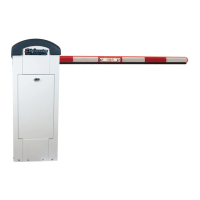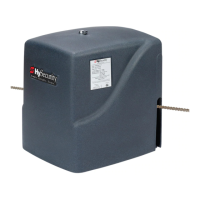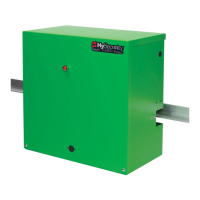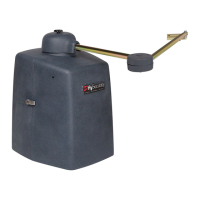www.hysecurity.com Safety D0536 Rev. C Safety-7
CHoosIng seCondarY entrapment proteCtIon
The site designer or installer determines which secondary entrapment sensor devices will be installed with the
StrongArmPark DC operator. The type of entrapment sensor device systems are described below. For a complete
listing of the requirements, see UL 325 Safety Standards.
NOTICE: StrongArmPark DC is equipped with a dynamic reversing sensor similar to a Type A primary device. Any
impediment to gate travel causes the barrier arm to stop and reverse.
Usage Class Primary Type Device Secondary Type Device
Class I, II, III A B1, B2, C, or D
Class IV A B1, B2, C, D, or E
To comply with UL 325, refer to the chart and take the following steps:
1. Select the Usage Class according to the gate’s locale and purpose.
2. The required UL 325 primary Type A sensor is an integral part of the StrongArmPark DC system.
3. Based on the gate’s usage class, choose Secondary Type Devices: B1, B2, C, D, or E.
• To comply using B1 - install non-contact sensors (photoelectric sensor or the equivalent).
• To comply using B2 - install contact sensors (edge sensor device or the equivalent).
• To comply using a Type D device requires a CONSTANT HOLD push-button station. This CONSTANT HOLD
push-button station must be the only device that opens and closes the gate. It can only be used where the gate
and push button station will be monitored by personnel 24 hours a day in full view of the gate area. An automatic
closing device (such as a timer, loop sensor, or similar device) must not be employed. A Warning placard stating,
“WARNING - Moving Gate has the Potential of Inicting Injury or Death - Do Not Start the Gate Unless the Path is
Clear” must be placed adjacent to the gate operator controls.
CAUTION
While compliance is possible with Type C, which is a low force limiting clutch, the StrongArmPark DC
operator does not utilize a clutch, therefore this option is not available.
Similar compliance issues exist with a Type E device (audio warn before operate alarm). A Type E device is
permitted as a means of secondary entrapment protection by UL 325 in Class IV applications, but it is not
recommended by HySecurity because a buzzer warns, but cannot protect against possible entrapment.
HySecurity highly recommends, even for Class IV use, that secondary entrapment protection (edge or photo-
eye sensor) devices be installed to detect possible entrapment.
To avoid risk of entrapment, do NOT install operator within two feet (2 ft, 61 cm) of a rigid object.
